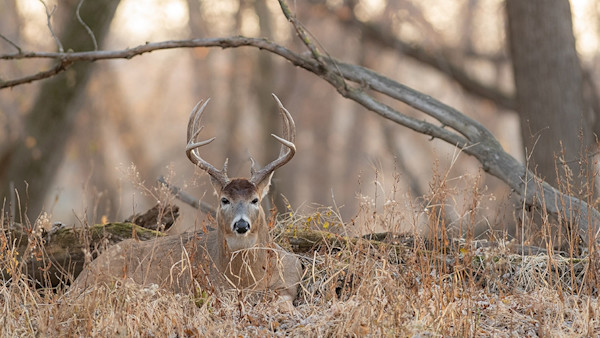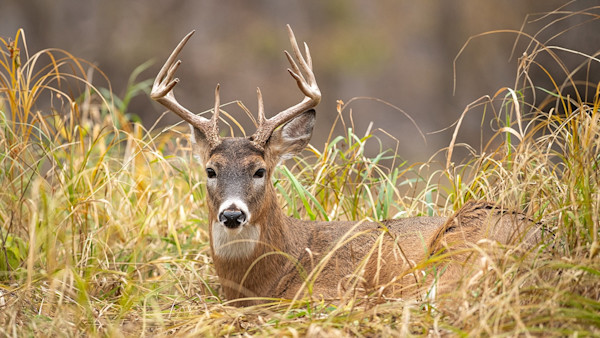
Let’s say we’re engaged in a high-stakes game of tag. If I tag you, I get your house, your truck, and your bow.
You, of course, will be wary of my presence. You might not leave your home too often, and if you do, it will probably be with minimal travel and under the cover of darkness. I likely won’t have much luck trying to tag you at your favorite restaurant, local park, or place of employment. The best spot, I’m guessing, will be at your home.
This scenario is analogous to the challenge we face when trying to kill a whitetail buck. And it illustrates exactly why locating and identifying buck bedding—the whitetail’s “home”—is so very important.
A buck’s bedding area represents the hub of the wheel for his movement—the central location that all other paths radiate out from. Food sources, funnels, trails, scrapes, and rubs are all important, but buck bedding is the sun which all of these other factors orbit. So, how can you find these locations?
Finding Deer Bedding Areas
The first step is to search broadly for areas that have buck bedding potential. The types of habitat that hold buck bedding can differ by region, but there are several factors to look for that are common across most areas.
“The first thing I personally look for are wet, swampy, or high stem count land features,” said Wisconsin bowhunter and recent Wired To Hunt podcast guest Joe Rentmeester. “I’m looking for spots that rarely see human intrusion. Swamps and marshes and thickets seem to decrease hunter numbers by a significant percentage just because of the difficulty of navigating the terrain—which gives big deer the safety and lack of human intrusion they need to survive.”
Steve Bartylla, a whitetail hunting and habitat consultant, similarly recommends thick, off-the-beaten-path areas, but also points to specific terrain features that can focus buck bedding.
“Bucks really like bedding on knobs off ridges, on what’s called the in military the ‘crest of a ridge,’ where it really starts dropping off hard,” he explained to me several years ago. “If you’re looking at any type of wetlands, if there’s any type of a peninsula of dry land that goes into that swamp, there’s a real good chance he’s bedding on the end of that. If there’s islands out in that swamp, there’s a real good chance he’s bedding there.”
Finding Buck Beds
Once you’ve located several areas that are likely to hold bucks, either on maps or in person, the next step is to carefully examine the scene for evidence of a buck actually bedding there. The most obvious sign to look for is the presence of oval depressions in the grass, brush, or dirt indicating where a deer laid down.
Take note of how many beds you see clustered together in one area. If you see four or more beds in a circle, it’s likely a doe bedding area. If you see a single solitary bed, or maybe a few beds more spread out, this is likely a buck. The presence of multiple rubs near a solitary bed is another indication you’ve found a buck bed.
Dan Infalt, whom many consider the godfather of hunting buck bedding areas, points out that bucks, especially mature ones, pick their bedding areas for very particular reasons.
“When you look at a buck bed you’re going to say, ‘wow this is the ideal setup,’ when you start considering the wind and sight and hearing advantages,” he said. “They take everything into account and they bed in a specific spot for a specific reason. That’s how I can predict bedding from a map, because it’s repetitive.”
With this being the case, if you do find a buck bed, consider kneeling down in the bed to examine what that buck can see, smell, and hear. Think about why he chose that spot. Answering this question can help you predict other buck bedding locations in the future.
Most of my scouting for buck bedding areas occurs in the early spring, but I’m keeping an eye out all year round. When I identify one of these spots, I consider what factors make it a desired location and then note it on my map. Then it’s on to the next one.
Seeking out these bedding areas can be a lot of work, but you can never locate too many. So what are you waiting for? Tag, you’re it.
Feature image via Matt Hansen.







Conversation